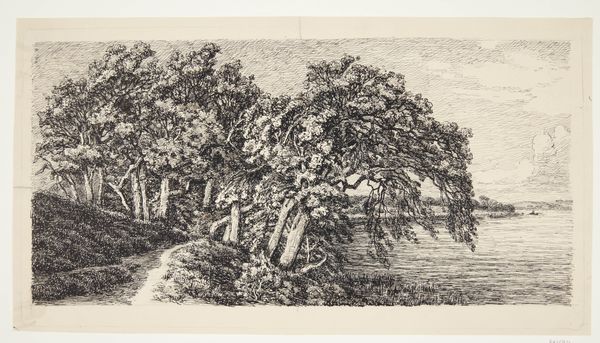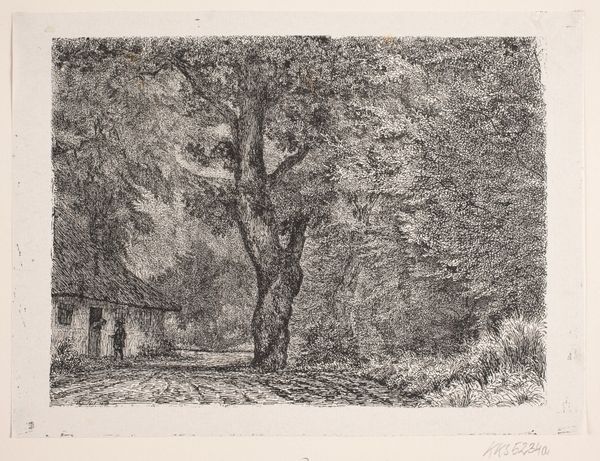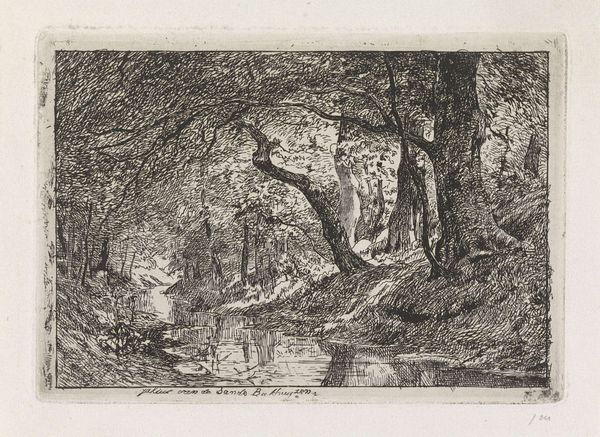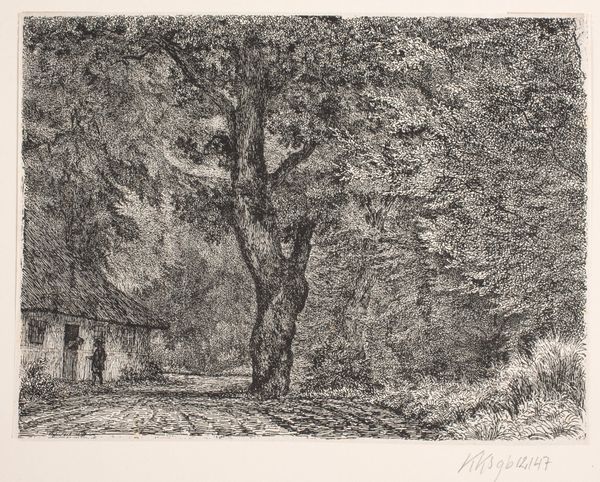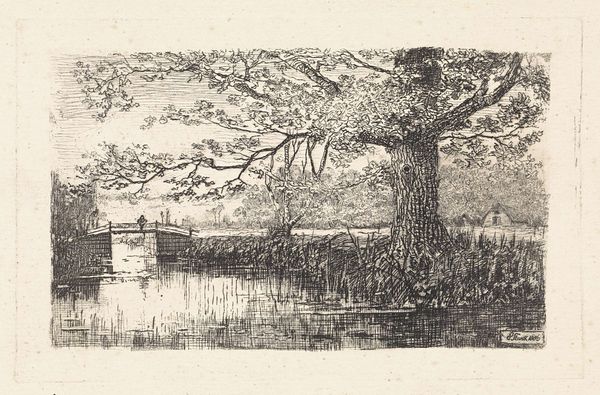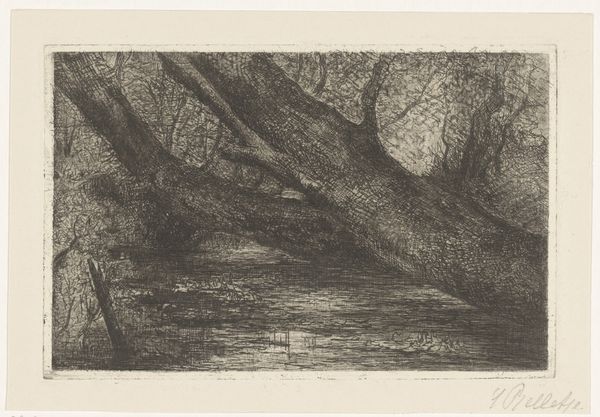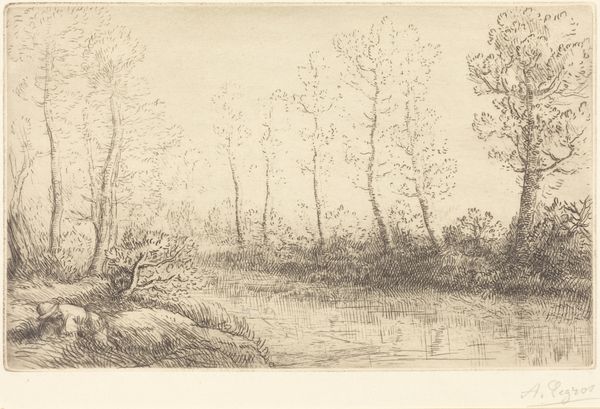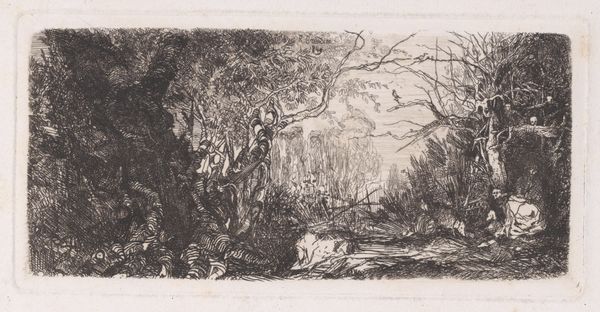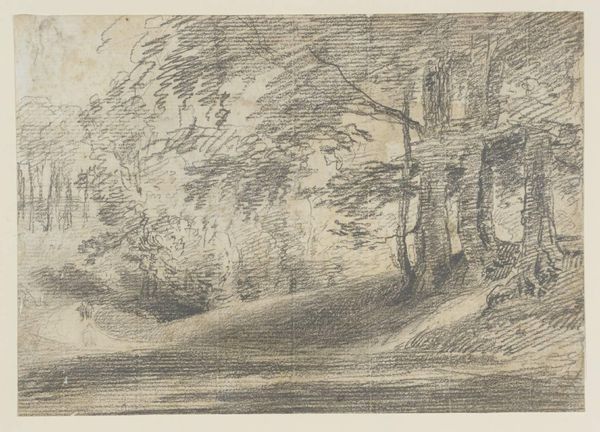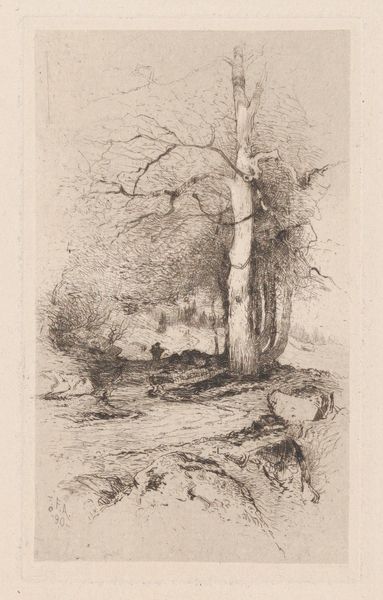
print, etching
# print
#
etching
#
landscape
#
forest
#
realism
Dimensions: height 97 mm, width 155 mm
Copyright: Rijks Museum: Open Domain
Elias Stark created "Bos te Bentheim" using etching, a printmaking technique, sometime in the late 19th or early 20th century. This process involves covering a metal plate with a waxy, acid-resistant layer, then scratching an image into that surface, exposing the metal underneath. The plate is then submerged in acid, which bites into the exposed lines, creating grooves. The entire plate is inked, then wiped clean, leaving ink only in the etched lines. Finally, paper is pressed firmly against the plate, transferring the image. Look closely at the image and you'll see the rich texture, the labor evident in every stroke. Stark's mastery lies not just in representation, but in manipulating the etching process itself. The controlled erosion by acid, the precise inking and wiping – each step contributes to the final image. In appreciating this print, we move beyond mere aesthetics, we recognize the hand of the artist and the transformation of materials through technical skill. This approach encourages us to rethink traditional hierarchies, valuing the artistry inherent in craft.
Comments
No comments
Be the first to comment and join the conversation on the ultimate creative platform.

